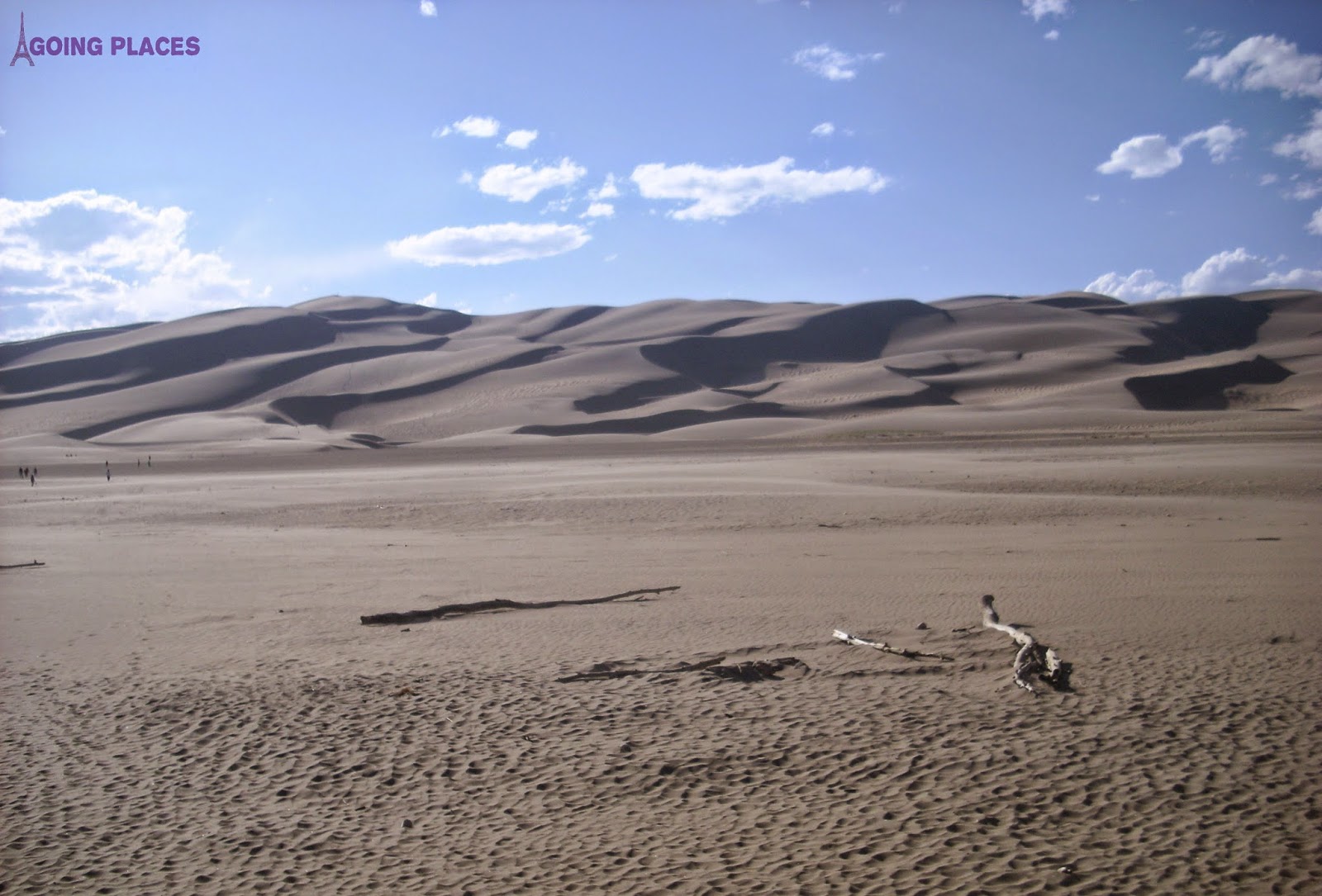I'm sure you all remember the mashed potato sculpture in Close Encounters of the Third Kind.
And the spaceship:
That really cool rock formation is Devil's Tower in Wyoming. It doesn't have a top secret government facility at the bottom, though. Actually it is a National Monument.
You can hike the trail that goes around it, as we did (lovely views). If you are more adventurous, you can climb it.
The tower was formed by the intrusion of igneous materal. Everyone can agree on that much. What they can't agree on is how that happened. There are many theories: It is an eroded laccolith (a huge mushroom shaped rock that does not reach the surface); It is a volcanic plug or neck of an extinct volcano; It is a stock (magma that cooled underground and is later exposed by erosion).
As the rock cooled and cracked hexagonal columns were formed.
No matter what process formed the rock, it was exposed by erosion. The area around it contiues to erode, exposing more of the tower. The tower itself also continues to erode so that it is smaller than it was originally. Often rocks fall and land around the base of the tower.
The tower has long been known to Native Americans and several tribes have traditions about the tower. In the Kiowa and Lakota traditions, girls were out playing when some bears began chasing them. The girls climbed on a rock and prayed to the great spirit who caused the rock to grow into the tower. It was too steep for the bears to climb, but they left claw marks.
The Sioux version is very similar, though it is two boys who are being chased by Mato the bear. The boys were eventually helped off the new mountain by an eagle. The Cheyenne version is more violent. Most of the girls being chased by the bear are killed, but two escape to get help from two boys. As the bear tries to climb the mountain, leaving claw marks, to get to the girls, the boys shoot arrows at its left foot (the fatal weakness). The boys come close enough to hitting the foot that bear leaves never to return.
The first documented visitors to the tower were members of Captain Raynold's Expidition to Yellowstone in 1859. In 1875, Colonial Richard Dodge led an Office of Indian Affairs Scientific Survey party to the tower. They came up with the name Devil's Tower.
In 1892 the tower became part of a US Forest Reserve, designated by Congress. Later, in 1906, the tower became the first National Monument, thanks to Teddy Roosevelt.
The first person to climb the tower (as far as anyone knows) was William Rogers in 1893. With the help of Willard Ripley, he built a 350 foot ladder to the top and braced it by hammering stakes into the rock wall. The he climbed it in front of a crowd of spectators and planted an American flag at the top. Other climbers used the ladder until 1927 and part of it can still be seen, though it requires a telescope.
The first to climb the tower using rock climbing techniques was Fritz Weissner in 1937. It took him (and two companions) 4 hours and 46 minutes. The most popular route, which has about 1,000 climbers a year (of all ages!), was determined by Jack Durrance.
George Hopkins parachuted onto the top in 1941. Unfortunatley for him, his planned descent didn't work and he was stuck at the top for six days. Food was dropped to him by airplane until climbers were finally able to rescue him. He is the only person to get to the top without climbing. Today, many people climb the tower, but it requires rock climbing experience and equipment.


























































